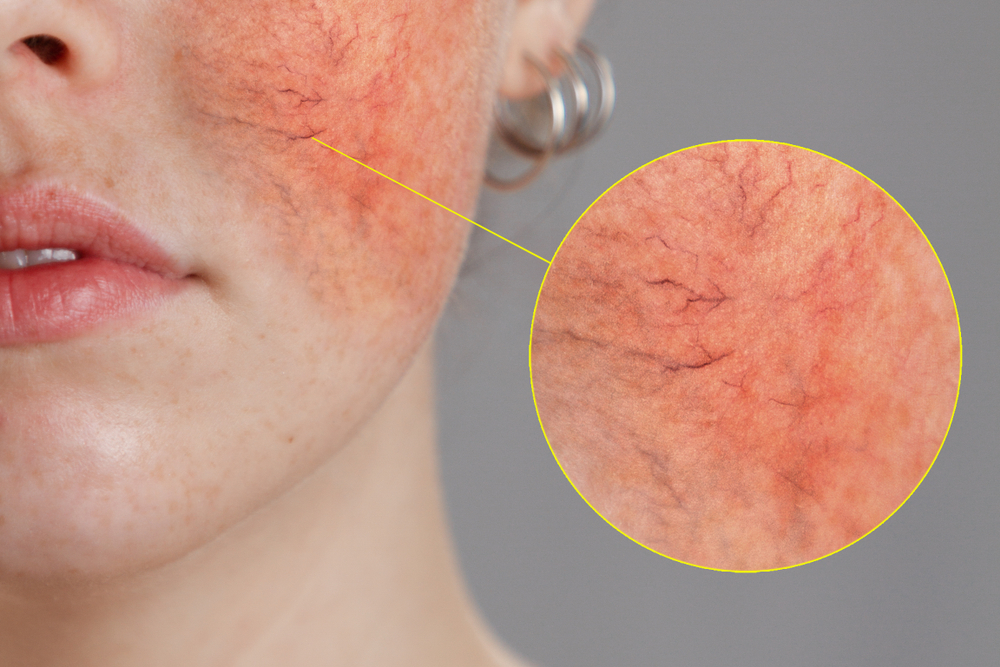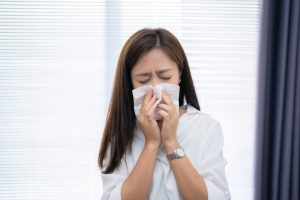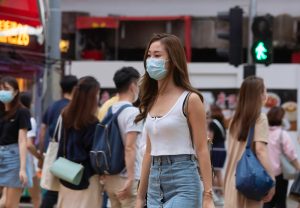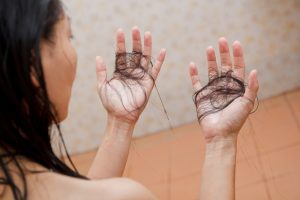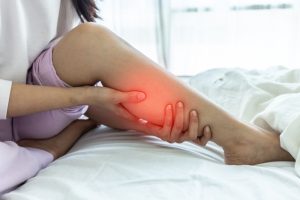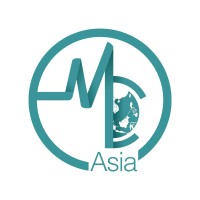
Rosacea is a chronic inflammatory skin disorder affecting mainly the central face – nose, chin, cheeks and forehead. The neck, chest, scalp and ears are less often involved. It is characterised by facial redness with visible blood vessels, and small red bumps or pus-filled pimples. Often under-diagnosed because people mistake it for a healthy blush, learn more about rosacea: symptoms, triggers & management, by reading on.
Rosacea cycles between flares lasting for weeks or months, and remissions. If left untreated, the nose may become bumpy and swollen from excess tissue (rhinophyma).
In half of the patients, Ocular Rosacea develops where the eyes experience dryness / burning / stinging, appearing watery and bloodshot; visual loss due to corneal damage may occur without timely intervention.
Risk Factors
Although proven to be more apparent in Europeans who are fair skinned, with blond hair and blue eyes, Asians with the following characteristics are more likely to develop Rosacea:
- Female
- Over 30 years old
- A smoker
- Have a family history of Rosacea or severe acne
What Causes Rosacea?
The exact cause of Rosacea is unknown, but there are many theories which propose:
- Immune dysfunction
- Certain microorganisms
- Ultraviolet radiation
- Vascular hyper-reactivity
- Genetics
Triggers for Rosacea flare-ups are, however, well-documented and include:
- Extreme temperatures
- Sun and/or wind exposure
- Hot beverages
- Spicy foods
- Exercise
- Alcohol consumption
- Strong, drying facial washes containing exfoliating agents or astringents (e.g. alcohol, witch hazel, menthol) which can irritate the skin
- Extreme emotions such as anger, anxiety, embarrassment
- Drugs that dilate or widen blood vessels e.g. nicotinic acid
Diagnosis of Rosacea
There are many conditions which may be mistaken as Rosacea e.g. acne, eczema, psoriasis, since redness is a non-specific clinical sign. Diagnosis of Rosacea is based on physical examination and history of signs and symptoms. The doctor may order blood tests if other conditions e.g. lupus are suspected.
Treatment of Rosacea
There is no cure for Rosacea, but it may be managed with a multi-pronged approach:
Proper skin care
As patients with rosacea have sensitive skin, they should clean their face twice daily upon waking and before bed to remove oil and dirt that may irritate the skin.
- Use a mild and non-abrasive cleanser free from harsh astringents
- Avoid exfoliation as the scrubbing can cause more inflammation
- Rinse off the cleanser thoroughly with lukewarm water and blot the face dry with a cotton towel
- Follow by patting on a hypoallergenic and fragrance-free moisturiser; moisturisers are essential in repairing the skin barrier to keep out irritants
It is important to note that many anti-aging moisturisers contain retinoids, glycolic acid or benzoyl peroxide, all of which may aggravate the skin redness and dryness in Rosacea.
If make-up is required to conceal bumps or redness for that boost of self-esteem, use only non-comedogenic cosmetics e.g. mineral make-up.
Suppression of the symptoms
Various medications may be prescribed to treat the bumps and redness:
- Topical antibiotics (e.g. metronidazole, clindamycin and erythromycin gel or lotion)
- Oral antibiotics (usually doxycycline or erythromycin) may be taken in more severe cases, usually for several months
- In cases refractory to oral antibiotics, oral isotretinoin may be prescribed.
- Adverse effects may include dry lips and skin, muscle aches, hair loss, and less commonly liver damage, unhealthy cholesterol levels and depression.
- Female patients should not become pregnant while on therapy as it can cause birth defects or miscarriage.
Laser therapies may also be useful in improving the appearance of rosacea skin:
- The Pulsed Dye Laser and the Intense Pulse Light (IPL) machine can reduce persistent redness and treat the prominent blood vessels of rosacea.
- For patients with an enlarged, thickened, swollen nose (rhinophyma), the Carbon Dioxide Laser can be used to reduce the thickness of the skin.
Avoidance of triggers
Sun exposure is a common cause for rosacea flares. It is best to avoid direct sun exposure or at least be adequately protected from the sun:
- Wear broad-brimmed hats or use umbrella
- Apply sunscreen diligently
The sunscreen should have at least SPF (sun protective factor) 30 UVA and UVB protection. Avoid other triggers like alcohol, smoking and spicy foods.
Concluding Thoughts
Rosacea affects everyone differently and the best way to manage your condition is to work with your dermatologist to develop a treatment plan and avoid your triggers.



